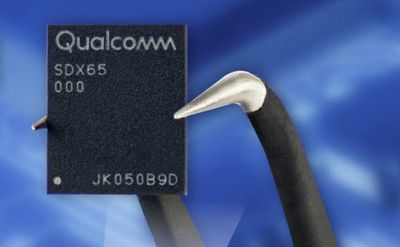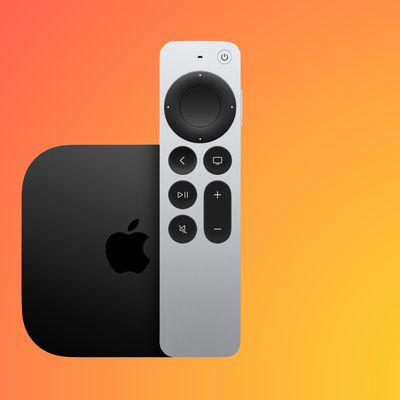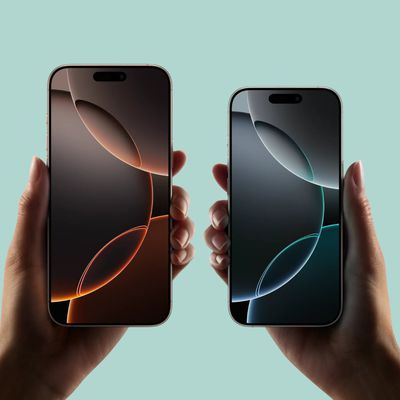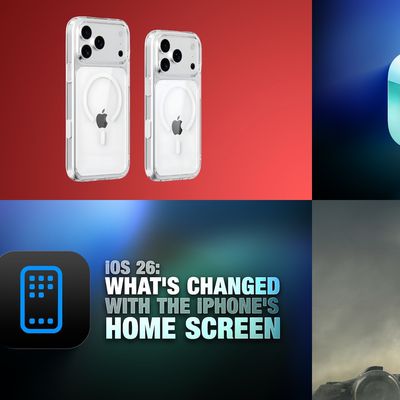Qualcomm's Snapdragon X65 Modem Upgraded With Wider mmWave Coverage Ahead of Inclusion in 2022 iPhones
Qualcomm today announced it has upgraded its Snapdragon X65 5G modem with improved power efficiency and support for wider mmWave carriers, a key requirement ahead of the rollout of 5G mmWave networks in China.

Specifically, the modem now supports wider 200MHz carrier bandwidth in the mmWave spectrum and mmWave in standalone (SA) mode, while new power-saving technologies part of Qualcomm 5G PowerSave 2.0 allow for longer battery life. These enhancements are possible because the Snapdragon X65 has software-upgradable architecture, allowing for improvements to be made to the modem over time.
First introduced in February, the Snapdragon X65 is the world's first 10 Gigabit 5G modem and antenna system for smartphones, enabling theoretical data speeds up to 10 gigabits per second. Apple will likely use the Snapdragon X65 in 2022 iPhones, as part of a multiyear chipset supply agreement with Qualcomm, building on the Snapdragon X55 in the iPhone 12 lineup and likely the Snapdragon X60 in the iPhone 13 lineup.
As with the Snapdragon X60, the Snapdragon X65 can aggregate data from mmWave and sub-6GHz bands simultaneously to achieve an optimal combination of high-speed and low-latency coverage, resulting in an improved 5G experience on the iPhone.
mmWave is a set of 5G frequencies that promise ultra-fast speeds at short distances, making it best suited for dense urban areas. By comparison, sub-6GHz 5G is generally slower than mmWave, but the signals travel further, better serving suburban and rural areas. mmWave support on iPhone 12 models is limited to the United States, but rumors suggest that iPhone 13 models may support mmWave in additional countries.
The Snapdragon X65 could be the last Qualcomm modem used in iPhones, as analyst Ming-Chi Kuo and other sources have forecasted that Apple may be ready to switch to its rumored in-house 5G modem for iPhones starting in 2023.
Popular Stories
A new Apple TV is expected to be released later this year, and a handful of new features and changes have been rumored for the device.
Below, we recap what to expect from the next Apple TV, according to rumors.
Rumors
Faster Wi-Fi Support
The next Apple TV will be equipped with Apple's own combined Wi-Fi and Bluetooth chip, according to Bloomberg's Mark Gurman. He said the chip supports ...
Apple will launch its new iPhone 17 series in two months, and the iPhone 17 Pro models are expected to get a new design for the rear casing and the camera area. But more significant changes to the lineup are not expected until next year, when the iPhone 18 models arrive.
If you're thinking of trading in your iPhone for this year's latest, consider the following features rumored to be coming...
Apple's next-generation iPhone 17 Pro and iPhone 17 Pro Max are only two months away, and there are plenty of rumors about the devices.
Below, we recap key changes rumored for the iPhone 17 Pro models.
Latest Rumors
These rumors surfaced in June and July:A redesigned Dynamic Island: It has been rumored that all iPhone 17 models will have a redesigned Dynamic Island interface — it might ...
The long wait for an Apple Watch Ultra 3 is nearly over, and a handful of new features and changes have been rumored for the device.
Below, we recap what to expect from the Apple Watch Ultra 3:Satellite connectivity for sending and receiving text messages when Wi-Fi and cellular coverage is unavailable
5G support, up from LTE on the Apple Watch Ultra 2
Likely a wide-angle OLED display that ...
iPhone 17 Pro and iPhone 17 Pro Max models with displays made by BOE will be sold exclusively in China, according to a new report.
Last week, it emerged that Chinese display manufacturer BOE was aggressively ramping up its OLED production capacity for future iPhone models as part of a plan to recapture a major role in Apple's supply chain.
Now, tech news aggregator Jukan Choi reports...
The iOS 26 public beta release is quickly approaching, while developers have recently gotten their hands on a third round of betas that has seen Apple continue to tweak features, design, and functionality.
We're also continuing to hear rumors about the iPhone 17 lineup that is now just about right around the corner, while Apple's latest big-budget film appears to be taking off, so read on...




















